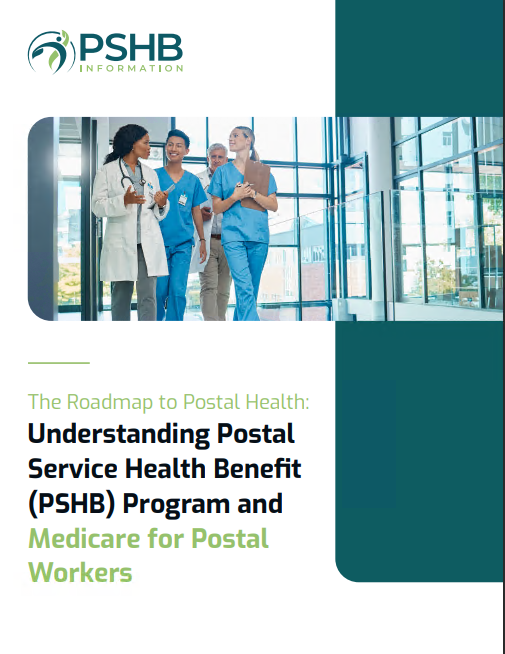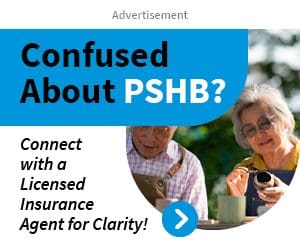Key Takeaways:
- USPS retirees must enroll in Medicare Part B by January 1, 2025, to maintain their Postal Service Health Benefits (PSHB) coverage.
- The new PSHB program will integrate with Medicare to offer comprehensive health benefits for USPS retirees.
Wondering About Enrolling in Medicare Part B and Your PSHB Benefits? Here’s What USPS Retirees Should Know
As a USPS retiree, understanding how your health benefits will change with the upcoming integration of the Postal Service Health Benefits (PSHB) program and Medicare Part B is crucial. Starting January 1, 2025, significant changes will affect your health insurance coverage. Here’s an in-depth look at what you need to know and how to navigate this transition effectively.
Understanding PSHB and Medicare Part B Requirements
The Postal Service Health Benefits (PSHB) program is set to replace the Federal Employees Health Benefits (FEHB) program for USPS employees, annuitants, and their eligible family members starting in 2025. One of the critical changes is the requirement for Medicare-eligible retirees to enroll in Medicare Part B to continue their PSHB coverage.
What is Medicare Part B?
Medicare Part B covers medical services such as doctor visits, outpatient care, preventive services, and some home health services. Enrollment in Medicare Part B requires a monthly premium, which is determined by your income. It complements Medicare Part A, which covers hospital services, and together they form a more comprehensive health care package.
Why is Enrollment Mandatory?
The integration of PSHB with Medicare aims to streamline health benefits and reduce overall costs for retirees by leveraging Medicare’s extensive coverage network. By enrolling in Medicare Part B, retirees can ensure that they continue receiving the necessary medical care while also maintaining the additional benefits provided by PSHB.
Navigating the Enrollment Process
Enrolling in Medicare Part B can seem daunting, but understanding the steps and timelines can simplify the process. Here’s a step-by-step guide to help you through it.
Initial Enrollment Period
The Initial Enrollment Period (IEP) for Medicare Part B starts three months before your 65th birthday and ends three months after your birthday month. During this seven-month window, you can sign up for Medicare Part B without any penalties. It’s crucial to enroll during this period to avoid late enrollment penalties, which can increase your monthly premiums.
General Enrollment Period
If you miss your Initial Enrollment Period, you can sign up during the General Enrollment Period, which runs from January 1 to March 31 each year. Coverage will begin on July 1 of that year. Be aware that enrolling late may result in higher premiums due to late enrollment penalties.
Special Enrollment Period
You might qualify for a Special Enrollment Period (SEP) if you or your spouse are still working and covered under a group health plan based on that employment. The SEP allows you to enroll in Medicare Part B without penalties while you are still covered by the group health plan or within eight months of losing that coverage.
PSHB Coverage Details for USPS Retirees
The new PSHB program offers several benefits designed to provide comprehensive coverage for USPS retirees. Understanding these benefits can help you make informed decisions about your health care.
Coverage Transition
Starting January 1, 2025, all USPS retirees will transition from the FEHB program to the PSHB program. This transition will ensure that retirees continue to receive quality health care coverage that aligns with their needs.
Medicare Integration
The PSHB program is designed to work seamlessly with Medicare. For retirees enrolled in Medicare Part B, PSHB will cover additional services that Medicare does not fully pay for, such as copayments, coinsurance, and deductibles. This integration helps reduce out-of-pocket costs and provides more comprehensive coverage.
Prescription Drug Coverage
One of the significant advantages of the PSHB program is the inclusion of prescription drug coverage. All PSHB plans are required to offer Medicare Part D prescription drug benefits, ensuring that retirees have access to necessary medications at an affordable cost.
Preparing for the Transition
As a USPS retiree, preparing for the transition to the PSHB program involves understanding your current benefits and how they will change. Here are some steps to help you get ready.
Review Your Current Coverage
Start by reviewing your current health benefits under the FEHB program. Understand what services are covered, your out-of-pocket costs, and any limitations. This review will help you compare your current coverage with what the PSHB program will offer.
Attend Information Sessions
The USPS and the Office of Personnel Management (OPM) will provide information sessions and resources to help retirees understand the new PSHB program. Attend these sessions to get detailed information about the changes, enrollment procedures, and how the new benefits will affect you.
Update Your Contact Information
Ensure that your contact information is up to date with the USPS and OPM. This step is crucial to receive timely updates, enrollment information, and other important communications regarding the transition to the PSHB program.
Key Considerations for USPS Retirees
There are several key considerations for USPS retirees when transitioning to the PSHB program and enrolling in Medicare Part B.
Cost of Medicare Part B
While Medicare Part B provides essential medical coverage, it comes with a monthly premium that varies based on your income. It’s important to factor this cost into your retirement budget. The premium is typically deducted from your Social Security benefits, but you may need to pay it directly if you’re not receiving Social Security.
Late Enrollment Penalties
Failing to enroll in Medicare Part B during your Initial Enrollment Period can result in lifelong penalties. These penalties increase your monthly premium by 10% for each 12-month period you were eligible for Part B but didn’t sign up. This cost can add up over time, making timely enrollment critical.
Coordination of Benefits
Understanding how Medicare Part B and PSHB will coordinate benefits is essential. Medicare will be the primary payer for your medical expenses, while PSHB will cover additional costs. This coordination helps minimize your out-of-pocket expenses and ensures comprehensive coverage.
Impact on Dependents
If you have dependents covered under your current health plan, consider how the transition to PSHB will affect their coverage. Ensure they are also covered under the new plan and understand any changes to their benefits.
Resources for USPS Retirees
Navigating the transition to the PSHB program and Medicare Part B can be complex, but several resources are available to help USPS retirees.
USPS and OPM Resources
The USPS and OPM provide various resources, including websites, information sessions, and customer service representatives, to assist retirees with the transition. These resources offer detailed information about the PSHB program, enrollment procedures, and how to integrate Medicare Part B with your new benefits.
Medicare.gov
The official Medicare website is a valuable resource for understanding Medicare Part B enrollment, benefits, and costs. It provides comprehensive information and tools to help you make informed decisions about your health care coverage.
Licensed Insurance Agents
Consulting with a licensed insurance agent can provide personalized assistance with understanding your Medicare and PSHB benefits. These agents can help you navigate the enrollment process, compare plans, and ensure you make the best decisions for your health care needs.
Steps to Take Now
As a USPS retiree, taking proactive steps now can help ensure a smooth transition to the PSHB program and Medicare Part B.
Mark Important Dates
Keep track of important dates, such as your Initial Enrollment Period for Medicare Part B and the start of the PSHB program on January 1, 2025. Mark these dates on your calendar to avoid missing critical deadlines.
Gather Necessary Documents
Ensure you have all the necessary documents for Medicare Part B enrollment, such as your Social Security number, proof of age, and any required employment verification. Having these documents ready can streamline the enrollment process.
Seek Professional Advice
If you’re unsure about any aspect of the transition, seek advice from professionals. Licensed insurance agents, financial advisors, and health care counselors can provide guidance tailored to your specific situation.
Staying Informed and Prepared
Staying informed and prepared is key to successfully transitioning to the PSHB program and integrating your Medicare Part B benefits. Regularly check for updates from the USPS and OPM, attend information sessions, and utilize available resources to stay ahead of any changes.
Understanding the Impact on Your Health Care
The transition to the PSHB program and Medicare Part B will significantly impact your health care coverage. By understanding the changes, planning ahead, and utilizing available resources, you can ensure that you continue to receive comprehensive and affordable health care as a USPS retiree.
Future Changes and Updates
Health care programs and policies can change over time. Stay informed about any future updates or changes to the PSHB program and Medicare that may affect your benefits. Regularly review your coverage and adjust your plans as needed to maintain optimal health care coverage.
Ensuring a Smooth Transition
For USPS retirees, the transition to the PSHB program and Medicare Part B marks a significant change in health care coverage. By understanding the new requirements, enrolling in Medicare Part B on time, and staying informed about the PSHB program, retirees can ensure they continue to receive comprehensive health benefits. Preparing in advance, seeking professional advice, and utilizing available resources will help make this transition as smooth as possible. Stay proactive and informed to navigate this change effectively.
Contact Information:
Email: [email protected]
Phone: 3615551234






